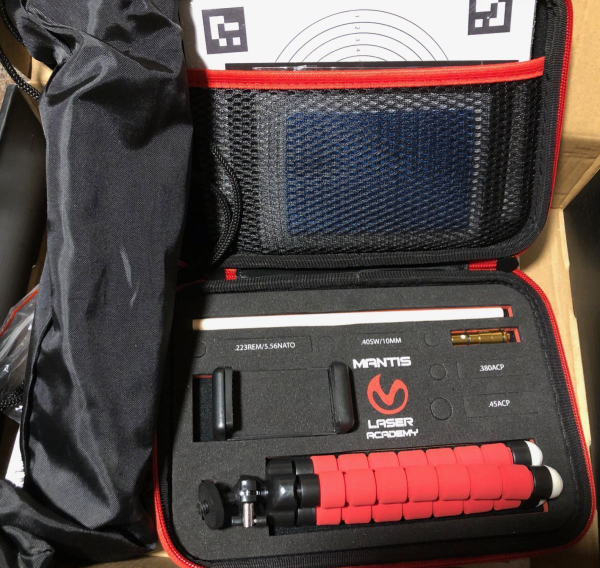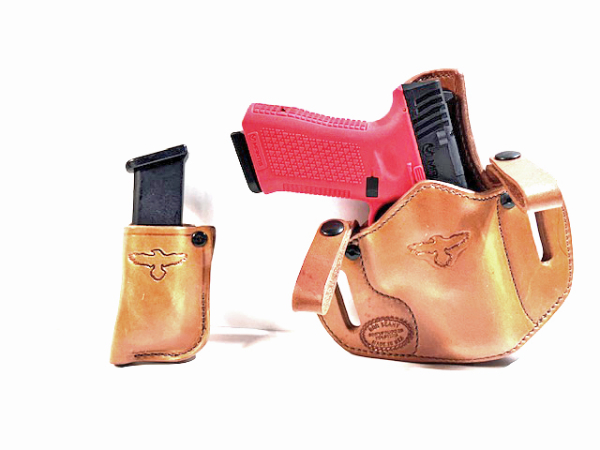As we wander into the coldest time of the year hereabouts, it’s time to adjust to another way of practice in an attempt to keep skill levels above marginal. Due to weather conditions at times, range time can be less than productive.
While it’s good to test in adverse weather, trying to practice and learn while miserable is another thing.

Dry practice can be enhanced with gadgets like the MantisX system (above). The targets and holders (below) and a smartphone with the Mantis app can help with record keeping, error correction.
The standard is dry practice, something that should be done regardless of season, but is often not done. People consider it mind-numbing and that’s not without some basis. The MantisX system from some time back attempted to move dry practice into a community event online.
It’s smart. If there are challenges, the targets are standard, and more than one person is involved, the competitive drive comes out. The laser cartridge concept is fine, but with auto pistols, it takes resetting the striker/hammer for each shot. It’s the same with the external laser that fits on the accessory rail.
You can shoot the FBI qual, among other courses, using the Mantis app on your smartphone – a smart idea.

The Mantis TitanX is an inert training “pistol” with integral laser. It fits most holsters for a gun its size (the Simply Rugged gear is shown) and comes with a “spare magazine,” which gives weight to the rechargeable “gun.”
Now they have the complete pistol, the Mantis TitanX inert laser training pistol. With self-resetting trigger and internal laser – and a USB port for charging – you can use your holster -- worn your way -- to get some relevant marksmanship practice, along with some gun-handling practice.
You don’t have blast and recoil, but you’re still getting the idea of keeping the gun still while managing grip and trigger.
The MantisX Pistol/Rifle app gives you feedback and allows coaching to clean up shooting errors.
In addition to dry practice - if there’s one available -- you can use an indoor range. While that’s helpful for staying in out of the weather, the noise level (even with ear pro) and lead in the air isn’t helpful. Still, managing hygiene and use of plugs-and-muffs makes the place relevant.
You can practice draws, reloads and other gun handling at home. Use the indoor range to enhance precision, not work on speed – particularly if there are prohibitions on drawing from a holster and cyclic-rate sustained fire.
I found, last winter, that the Garmin Xero C1 Pro chronograph worked just fine on the indoor range as only one lane was populated by a shooter. This took my range trip from shooting practice to getting data for a feature.
While you’re figuring out your winter practice and sustainment regime, we’re heading into our annual break. The last two weeks of every year, our services go on hiatus while we learn new systems and procedures, clean up the remnants of the preceding work year – and spend some time with family.
This is our last Tactical Wire of 2025. That being the case, we’re looking forward to everyone joining in with us as our wire services fire up in 2026. Here’s wishing you a Merry Christmas, the happiest, safest and healthiest of holidays and a productive New Year.
— Rich Grassi